This is part 5 of the Getting Started with Birding series
For identification, most birders focus on visual aspects of a bird – their size, colour, shape and other field marks. However, to become a better birder, learning to be attentive to the sounds of birds around you is an extremely valuable skill.
There are a number of reasons why a good birder should not ignore the sounds our avian friends make. Here’s a few of them:
Location
Imagine you’re in a dense forest. All too often, you’ll be surrounded by the sounds of birds, but you may not see much, as small birds move through dense bushes and the canopy. However, being able to focus on the sound of a bird and tracking it based on where it is calling from can be the difference between getting views of a warbler and not even knowing one was there!
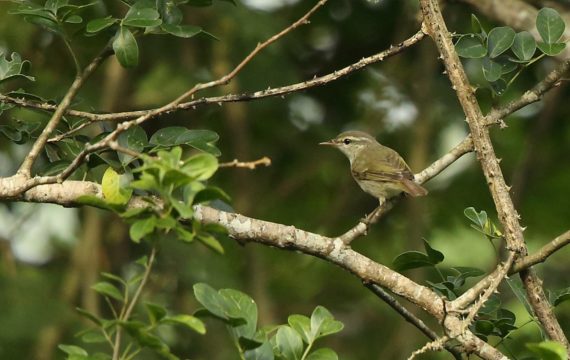
A Greenish Warbler flits through the vegetation. Photo: Albin Jacob/ML Library at the Cornell Lab
Tuning your ears to focus on bird sounds is much more helpful to locate a bird than to rely on brief flickers and movement in dense foliage.
Identification
Very often, birders rely heavily on visual details of a bird to identify them. Plumage, colour, shape, size and other visual features are usually given more importance than other clues. With the widespread availability of digital cameras, the heavy reliance on these field marks has only grown as more people identify birds from their photos when back at home, rather than attempt IDs in the field. But familiarity with the sounds of birds helps a great deal in field identification.
Sounds are sometimes the best way to distinguish species that are similar in appearance.
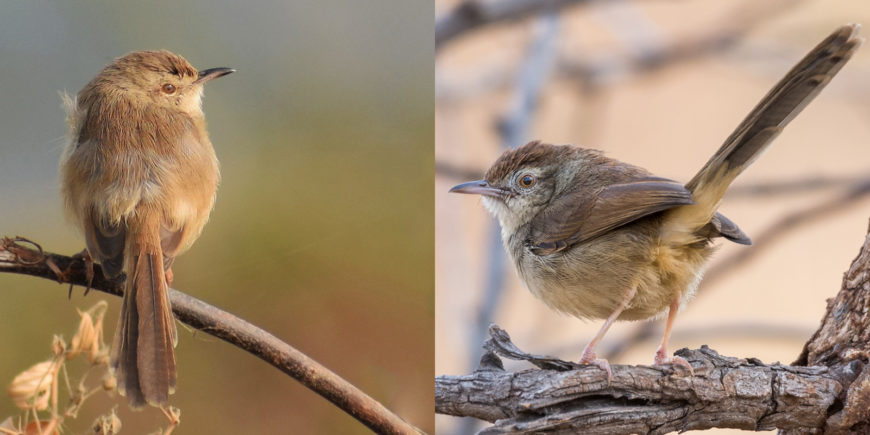
Plain Prinia (L) and Jungle Prinia (R) can be quite hard to tell apart in the field but they have distinctly different songs. Photos: Plain Prinia – Vivek Rawat/ML Library, Jungle Prinia – Fareed Mohmed
Identifying birds by sounds also increase efficiency! If you are familiar with bird calls, you’ll often find more species, and sooner. You’ll also know which sounds to pursue further. Top birders often find “rarer” birds because, being familiar with common sounds, they know where it may be worth investing their time looking for a call from the bushes.
Birding by ear is also greatly helpful when visibility is poor — when the light is low (such as when birding at night or early dawn) or the vegetation is very dense. While poor visibility makes it hard to get an adequate view of the birds, their sounds come through loud and clear.
Bird behaviour
Beyond identification, the sound a bird makes can tell you a lot about what it may be up to. When a bird is singing, it may signal the oncoming breeding season as it announces itself to competitors and potential mates. When a bird makes repeated harsh calls, it may be warning its kin of nearby danger. Similarly, birds may give different flight calls, contact calls and other sounds. Learning the types of calls and listening to them carefully may provide valuable clues into what the bird is doing.
Always birding
A birder who’s tuned into bird sounds is always birding. You may not see a lot of birds from your office, but you might well be able to hear bird calls through the walls and windows. Being tuned into sounds allows one to enjoy the pleasures of birds even when one is not “actually birding”.
Relaxation – Birding and bird song go together
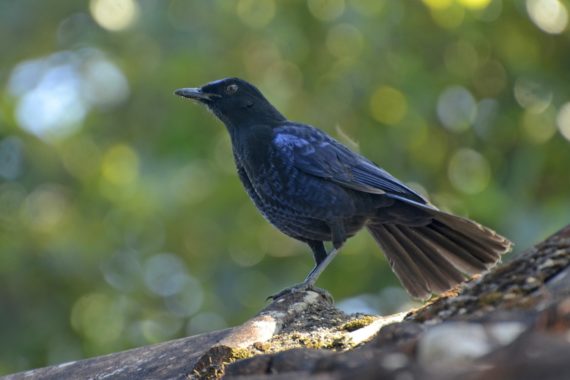
The melodious whistling song of the Malabar Whistling-Thrush is a sound that is synonymous with the forested streams of the Western Ghats. Photo: Panchapakesan Jeganathan/ML Library at the Cornell Lab
It is not obvious and one may not always realise it, but bird sounds play a critical role in making birding a hobby that is fun, relaxing, and meditative. Listening to birdsong is an uplifting experience for most people – even those who are not birders! The dawn chorus can be an overwhelming treat to the senses, one that brings joy and cheer to start the day. Be it the early morning song of the Oriental Magpie Robin, the consistent chirping of sparrows and bulbuls, the mid-day madness of the Common Hawk-cuckoo, or the late evening’s hoot of owls – the sounds that birds make play an important role in our daily lives. Long may they sing and call and twitter!
Can you think of more reasons to pay more attention to bird calls? Do let us know in the comments!
In the follow up article, we’ll look at how to get started with identifying birds using their sounds.
Header Image: Blue Whistling-Thrush Myophonus caeruleus © Ramesh Shenai/ Macaulay Library

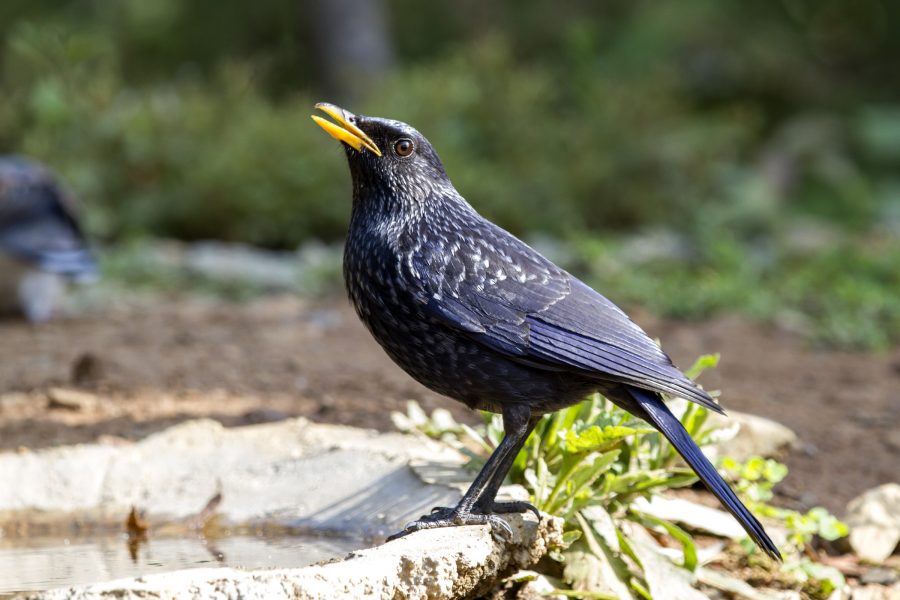
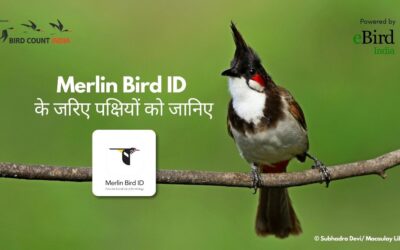
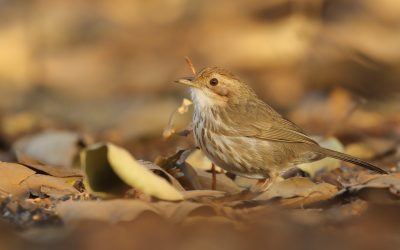
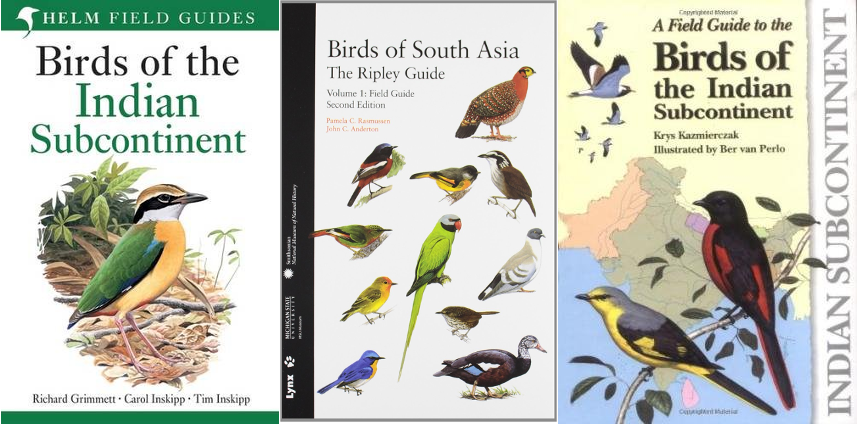
.A warbler whom I have not seen properly .so I recorded its sound .I was waiting to shot but it did not come out ..so I recorded its sound in mobile but failed to send you.